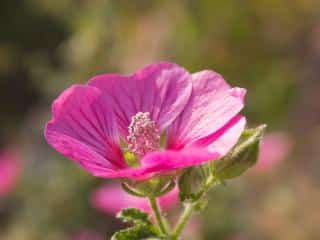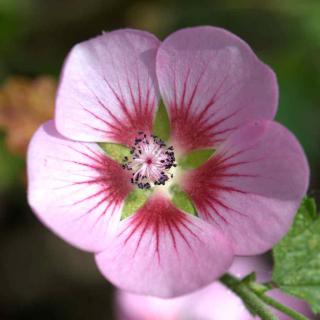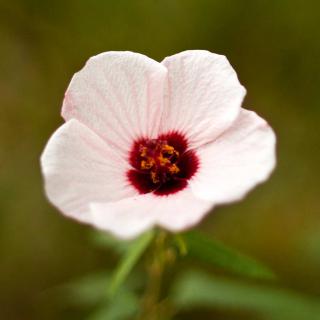

Anisodontea, or Cape mallow, is a beautiful shrub that blooms in spring.
Summary of cape mallow facts
Name – Anisodontea
Family – Malvaceae (mallow family)
Type – perennial shrub
Height – 5 feet (1.5 m)
Exposure – full sun
Soil: well-drained – Foliage: evergreen – Flowering: mid-spring → mid-fall
It deserves a prominent spot in gardens or potted on balconies and terraces.
It is best to plant them in the spring, after the last freezing.
For plants purchased with their roots bare, planting is best done in fall.
 Cape mallows flower best when planted in a well-lit place.
Cape mallows flower best when planted in a well-lit place.This shrub is particularly well adapted to growing in pots. For that, use planting or horticultural soil mix.
Cape mallows can bloom all year long as long as temperatures stay above freezing.
It is possible to grow Anisodontea indoors. For best results, it is best to simulate a period of dormancy: keep the plant in a cool, well-lit spot, that doesn’t freeze.
It is best to prune at the very beginning of spring to spur blooming.
The ideal pruning window is from the end of winter to the very beginning of spring.
Water your cape mallow only in case of prolonged dry spells and/or heat waves.
Add granulated flower shrub fertilizer in spring.
Overall, caring for cape mallow is straightforward and easy.

Native to South Africa, it grows particularly well in southern temperate climates or along the Atlantic coast.
Even though its foliage is evergreen, a cold spell that lasts more than a couple days will make it lose its leaves.
That’s why it is recommended to leave this plant outdoors only if winters are very mild.
Among the most common and favored varieties, Anisodontea capensis, also called dwarf pink hibiscus, is famed for its pink flowers with a red center. There are also Anisodontea hypomadarum which has magnificent pink blooms, and Anisodontea malvastroides which boasts pastel pink flowers.

The name “Anisodontea” comes from the greek word aniso which means “uneven” and odon which means “without teeth”.
If potted, it is advised to repot the shrub every 1 or 2 years.
If already too large, topdress the soil.